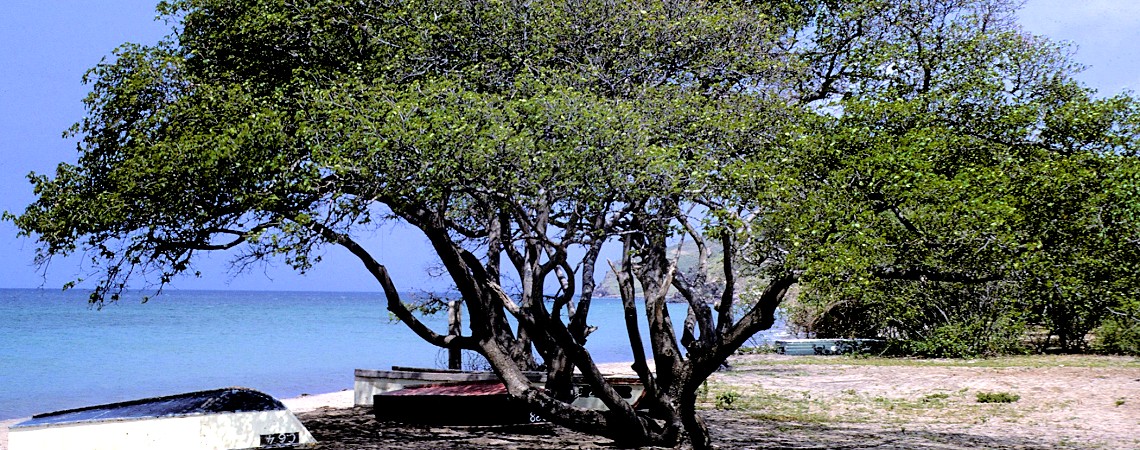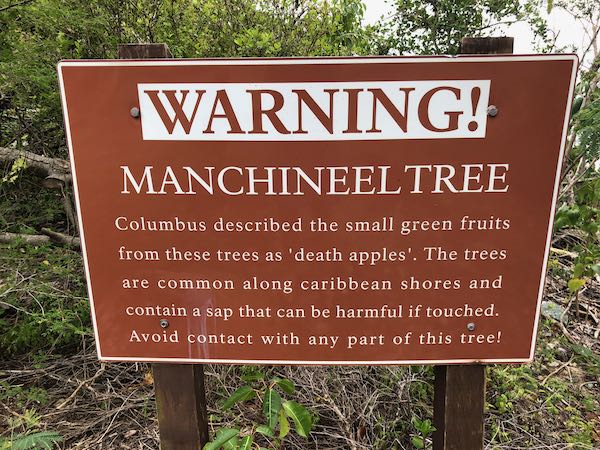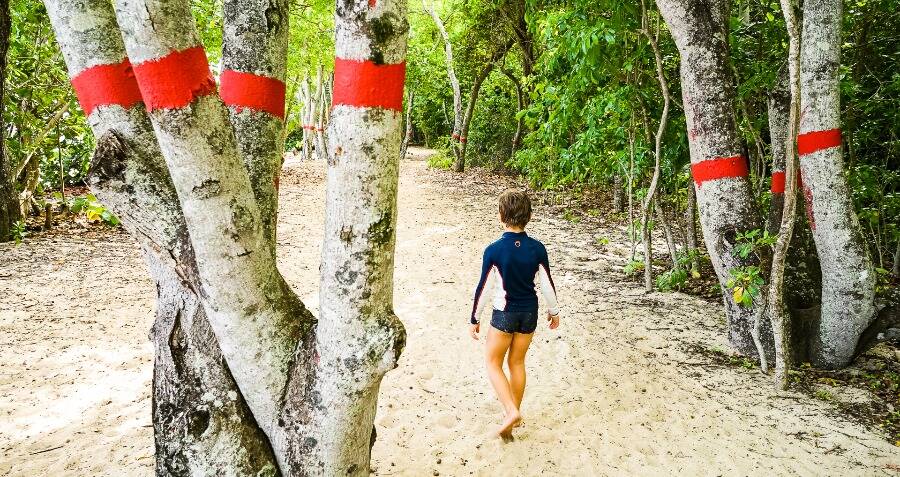A Scary Tropical Tree That Can Kill You
Written by Sneh Chaudhry on February 14, 2024
There’s a toxic coastal plant you need to know about, and it’s called the manchineel tree. You may have seen one during your travels—it’s often accompanied by cautionary signs and a bright red band painted around its trunk as a warning to all who pass by. While not all manchineel trees are so painted, they require a fervent advisory, because they are one of the most dangerous plant species around.
:max_bytes(150000):strip_icc():format(webp)/why-manchineel-might-be-earths-most-dangerous-tree-4868796-final-722228aa816540db929346d5d74c6b70.png)
The manchineel (aka Hippomane mancinella, aka the Tree of Death) is native to coastal areas in South Florida, as well as the northern reaches of Central and South America and the Caribbean. The trees live on beaches or in brackish water. They tend to grow in clusters and can be found growing among mangroves. According to the IFAS Extension, manchineel is listed as an endangered species in Florida and is in danger of becoming extinct there.

The plant gets its name from the Spanish word manzanilla, which means “little apple.” It is so named because the fruit and foliage of the plant resemble those of apple trees. It’s also been called manzanilla de la muerte, or “little apple of death,” a foreboding moniker if ever we’ve heard one.
The manchineel tree is quite attractive, growing as a tall shrub or as a tree that reaches 50 feet in height. The tree has single or paired, sweet, and small apple-like fruits. Manchineel can grow as a tall shrub or as a tree that reaches 50 feet in height. The fragrant nature of the bright green or greenish-yellow fruit has drawn in and poisoned Spanish conquistadores, shipwrecked sailors, and present-day tourists.
:max_bytes(150000):strip_icc():format(webp)/gettyimages-531363577-2000-c6ed46cb023e46a29102b651cc37f62f.jpg)
During a voyage, the legendary Captain James Cook and his crew came upon the manchineel. His men needed supplies, so Cook ordered them to collect fresh water and chop manchineel wood. During this process crew members rubbed their eyes, which reportedly resulted in their blindness for two weeks. Shipwrecked sailors have been reported to have eaten manchineel fruits, which caused inflammation and blistering around the mouth.
As it happens, all of the fearsome stories are warranted. Every part of the manchineel is poisonous. The fruit is toxic and the sap from the leaves and stems is too. If touched, the irritants in manchineel sap can cause inflammation and painful blisters on the skin.

Passersby are warned not to stand underneath the tree when it’s raining, as dripping water can transfer toxins from the tree to anyone nearby. Finally, burning manchineel bark has been known to irritate, even blindness, due to airborne poison ash.
While it’s highly advised to stay away from this potentially lethal tree, native peoples and colonists historically used manchineel wood and sap. The wood was (and in some areas, still is) carefully harvested and dried in the sun to neutralize the sap, then used to build furniture. Some native peoples used the sap to coat arrowheads for hunting.

Manchineel is more widespread than you might imagine, and there’s a reason people leave it alone. It’s found on beaches and throughout swamps in tropical climes, where it provides windbreaks and aids in preventing erosion.
If you’re in a locale where the manchineel grows, keep an eye out, and if you encounter one, stay far, far away. If you’re not convinced yet, read this frightening story of a manchineel encounter published in the BJM medical journal.:max_bytes(150000):strip_icc():format(webp)/gettyimages-173641064-2000-1067b11eb11f4e7d87d53ee26dd47f40.jpg)
Beware this coastal plant; it’s one of the most dangerous tropical species on the globe, and it’s best to stay far from it if you encounter one during a walk on the beach or an adventure in the mangroves.







